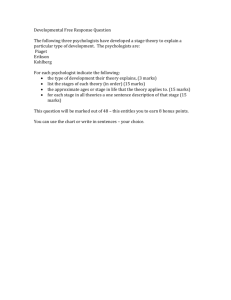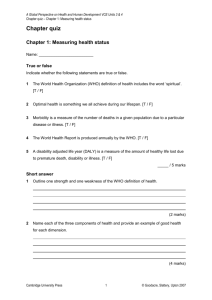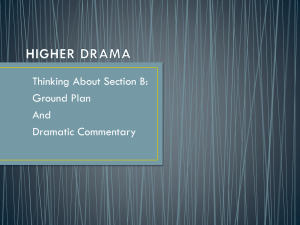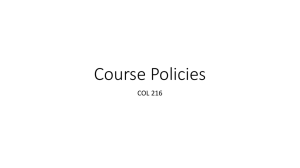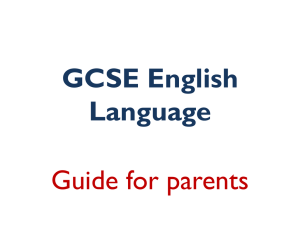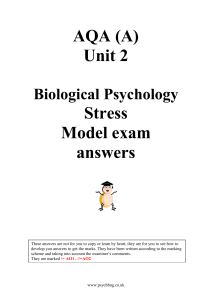WEEK 5 RM assessment feedback
advertisement
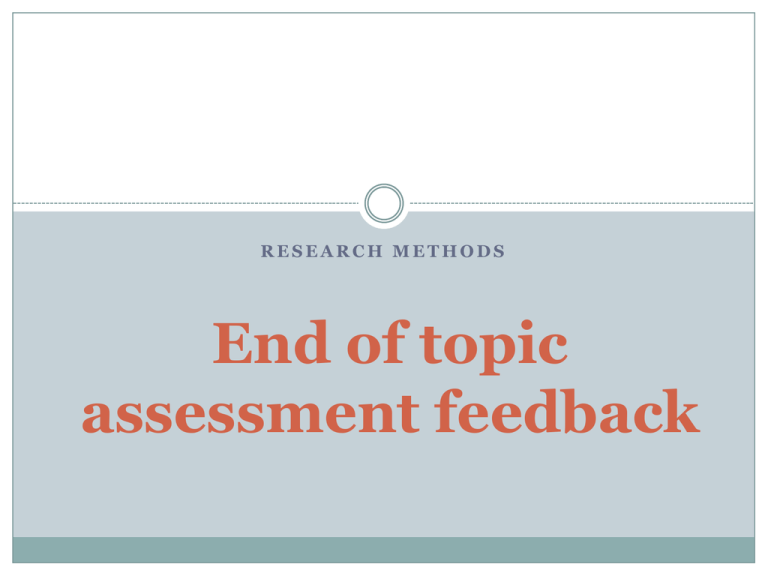
RESEARCH METHODS End of topic assessment feedback Question 1 Psychologists sometimes use case studies to study children. One example was of a boy who was discovered at the age of six. He had been kept in a darkened room and had had almost no social contact with people. How could a psychologist maintain confidentiality when reporting a case study. (2) b) Outline one technique which the psychologist could use in this case study. (2) c) Apart from ethical issues, explain one or more limitations of using case studies. (4) a) Question 1(a) 1 mark for identifying relevant way 2 marks for elaboration (an example or a second way) Answer 1: By not using participants names. Answer 2: By making sure that participants cannot be identified when reporting the case study. For example, using names or initials and avoid publishing personal details. Question 1(b) 1 mark for naming technique 2 marks for elaboration Answer 1: IQ test / observation / interview / questionnaire Answer 2: Psychologists might use interviews to gather data; this could be with the participant themselves or people such as parents who may offer a different insight. Question 1(c) 1c) Apart from ethical issues, explain one or more limitations of using case studies. Evaluation: must refer to weaknesses Advice: make 2 points and elaborate on each one Use psychological terminology to demonstrate your understanding Question 1(c) – Exemplar answer One limitation is that case studies may lack population validity. This means that the results may not be generalisable to other groups of people as the cases are unique, e.g. braindamaged patients. Another limitation is that the psychologist may become biased as they get to know the participant so well that they are not so objective. This is called investigator effects. Another limitation is that it is often necessary in case studies to use information from past events (retrospective data). Consequently this evidence may be unreliable as memory is not always 100% accurate (e.g. forgetting). Question 2 Research has shown that there is a relationship between stress and illness. The figure below shows the number of days off work through illness in a year and scores on a stress questionnaire, where a high score indicates more stress. What does the figure tell you about the relationship between stress and illness? Question 2 Marks awarded for commenting on: Direction Strength Detail of relationship Correct the 3 mistakes for an exemplar answer: The graph shows a weak, negative correlation between scores on a stress questionnaire and weeks off through illness. Question 3 Two groups of patients took part in a trail to compare the effectiveness of two different drug therapies. One of the groups was given Drug A and the other group was given Drug B. All patients completed a rating scale at the start of the ten-week course of treatment and again at the end of the course. This scale measured severity of symptoms. The Drug A group had an average score of 9 before the therapy and an average score of 4 at the end of the course. The Drug B group had an average score of 7 before the therapy and an average score of 5 at the end of the course. Sketch and label a bar chart to illustrate the data. (4 marks) Question 3 1 mark for correctly labelled x-axis (horizontal) 1 mark for correctly labelled y-axis (vertical) 2 marks for clearly sketching bar chart Full marks: must be appropriate use of graph paper and bars labelled correctly Common mistakes (Q3) Use the space available. Ensure all bars are the same size (need consistency!). Need to label both axis (Y = vertical, and X = horizontal). Use a key! Question 3
